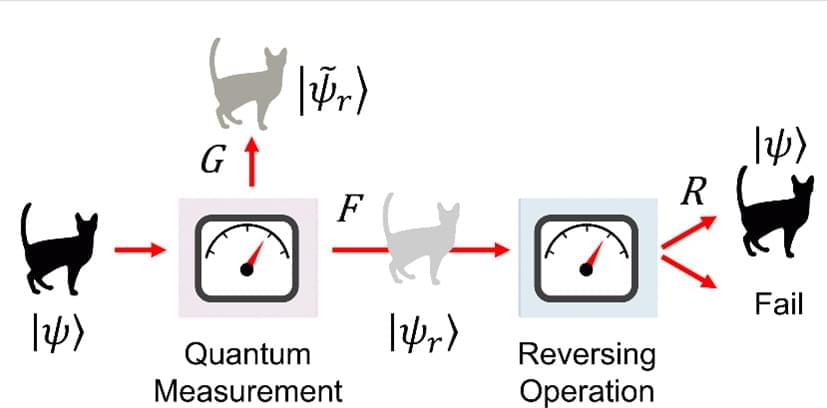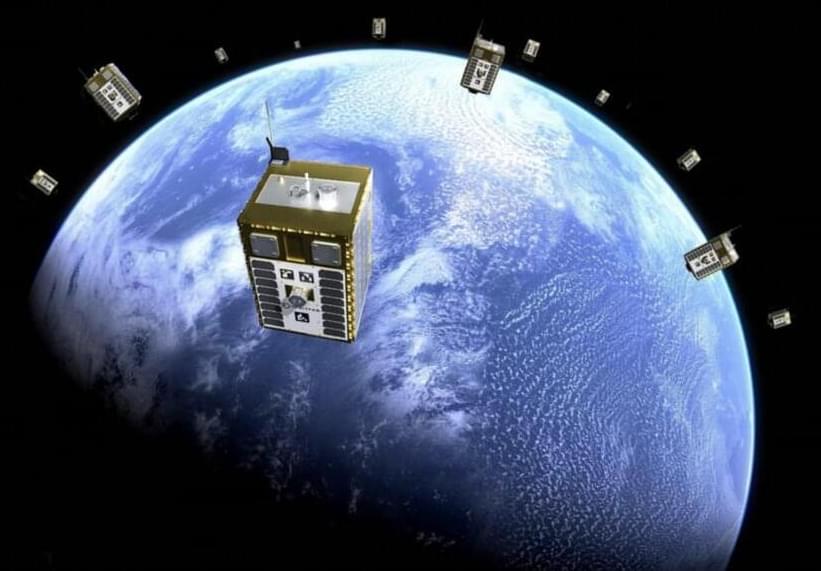For World Quantum Day, the Google Quantum AI team is introducing people to the world of quantum computing by teaming up with Doublespeak Games to make The Qubit Game, a journey into quantum computing.
Get the latest international news and world events from around the world.

NASA’s James Webb Space Telescope is ready for calibration after chilling out
The JWST has been gradually cooling down ever since its successful, but the telescope took a major step forward on that front when it its massive 70-foot sunshield at the start of the year. That component allowed JWST’s systems, including its critical Mid-Infrared Instrument (MIRI), to drop to a temperature of approximately minus 298 degrees Fahrenheit (or about minus 183 degrees Celsius).
Getting the JWST to its final operating temperature required NASA and the European Space Agency to activate the telescope’s electric “cryocooler.” That in itself involved passing a technical hurdle dubbed the “pinch point,” or the stage at which the James Webb’s instruments went from minus 433 degrees Fahrenheit to minus 448 Fahrenheit.
“The MIRI cooler team has poured a lot of hard work into developing the procedure for the pinch point,” said Analyn Schneider, MIRI project manager for NASA’s Jet Propulsion Laboratory. “The team was both excited and nervous going into the critical activity. In the end, it was a textbook execution of the procedure, and the cooler performance is even better than expected.”

The James Webb Space Telescope Is Going to Stare Straight Into Jupiter
After launching late last year, NASA’s revolutionary James Webb Space Telescope is finally getting ready to fixate its numerous golden mirrors on distant targets.
Intriguingly, though, one of its 13 early targets isn’t so distant at all — at least in the grand scheme of things. It’ll be looking at Jupiter, the iconic gas giant in our own star system. Of course, we already know quite a bit about the planet already— so why investigate it using the JWST if it can have a closer look at far more distant objects?
“We’ve been there with several spacecraft and have observed the planet with Hubble and many ground-based telescopes at wavelengths across the electromagnetic spectrum (from the UV to meters wavelengths),” Berkeley astronomer Imke de Pater, leader of the Jupiter observation team, told Digital Trends, “so we’ve learned a tremendous amount about Jupiter itself, its atmosphere, interior, and about its moons and rings.”
After 404 Days on Mars, Perseverance Has Finally Spotted Its Parachute
More than 13 months after the Perseverance rover landed on Mars (on 18 February 2021), the rover’s cameras have finally spotted some of the parts of the Mars 2020 landing system that got the rover safely to the ground.
The parachute and backshell were imaged by Perseverance’s MastCam-Z, seen off in the distance, just south of the rover’s current location. The image was taken on Sol 404, or 6 April 2022 on Earth.
Normally, the rover might have taken a brief side-trip early on in the mission to take images of the remains of the landing system. But Perseverance had to drive around some hazardous terrain to get to a large area of Jezero Crater that the science team wanted to study, called South Séítah.
SpaceX Mars City: Why, when, and how Elon Musk wants to build his ambitious plan
Musk plans to build a self-sustaining city on Mars.
Here is what you need to know about Musk’s mission.
What is the Mars city?
Musk plans to build a full-size city on the surface of Mars. This would be a city open to regular people, not just scientists and researchers.
People interested in moving to Mars could pay for their flight with a loan. Once there, people would be able to pay off the loan by working in anything from iron foundries to pizzerias. Musk declared at a 2016 conference that there would be labor shortages for a long time.
Researchers develop new AI form that can adapt to perform tasks in changeable environments
Can robots adapt their own working methods to solve complex tasks? Researchers at Chalmers University of Technology, Sweden, have developed a new form of AI, which, by observing human behavior, can adapt to perform its tasks in a changeable environment. The hope is that robots that can be flexible in this way will be able to work alongside humans to a much greater degree.
“Robots that work in human environments need to be adaptable to the fact that humans are unique, and that we might all solve the same task in a different way. An important area in robot development, therefore, is to teach robots how to work alongside humans in dynamic environments,” says Maximilian Diehl, Doctoral Student at the Department of Electrical Engineering at Chalmers University of Technology and main researcher behind the project.
When humans carry out a simple task, such as setting a table, we might approach the challenge in several different ways, depending on the conditions. If a chair unexpectedly stands in the way, we could choose to move it or walk around it. We alternate between using our right and left hands, we take pauses, and perform any number of unplanned actions.

Quantum measurement splits information three ways
Types of measurements can be further distinguished by how the sum of the three types of information compares to the information in the quantum state. Whereas optimal measurements preserve the total information in the quantum state, such that it is entirely split between the three types, in non-optimal measurements some information is lost. This lost information can be due to noise in the experiment or inefficient estimates of the original quantum state. Yet sometimes it is inherent in the quantum measurement itself. Such inescapable information loss in non-optimal measurements could give insights into how the classical world appears to emerge from quantum measurements.
Preserving three-way information using photons
In their experimental study, which is published in Physical Review Letters, Seongjin Hong and colleagues at the Korea Institute of Science and Technology and the Korea Institute for Advanced Study showed how the information about a quantum state splits into these three parts. The researchers used photons to experimentally demonstrate information-preserving optimal measurements in which each photon could be in one of three possible states. They then used optical components to perform measurement and reversing operations on the photons, before characterizing their final states and demonstrating the quantitative balance between the three information types.


Space Force looking at what it will take to refuel satellites in orbit
WASHINGTON – The U.S. Space Force in 2025 plans to launch to geostationary orbit three small satellites that will attempt to dock with a propellant tanker so they can be refueled in space.
The idea is to “test out pieces of the refueling infrastructure,” Col. Joseph Roth, director of innovation and prototyping at U.S. Space Systems Command, told SpaceNews last week at the Space Symposium in Colorado Springs.
The $50 million experiment, called Tetra-5, is run by the Space Force’s Space Enterprise Consortium. Bids for the project closed earlier this month.

A decade of science and trillions of collisions show the W boson is more massive than expected — a physicist on the team explains what it means for the Standard Model
“You can do it quickly, you can do it cheaply, or you can do it right. We did it right.” These were some of the opening remarks from David Toback, leader of the Collider Detector at Fermilab, as he announced the results of a decadelong experiment to measure the mass of a particle called the W boson.
I am a high energy particle physicist, and I am part of the team of hundreds of scientists that built and ran the Collider Detector at Fermilab in Illinois – known as CDF.
After trillions of collisions and years of data collection and number crunching, the CDF team found that the W boson has slightly more mass than expected. Though the discrepancy is tiny, the results, described in a paper published in Science on April 7, 2022, have electrified the particle physics world. If the measurement is correct, it is yet another strong signal that there are missing pieces to the physics puzzle of how the universe works.